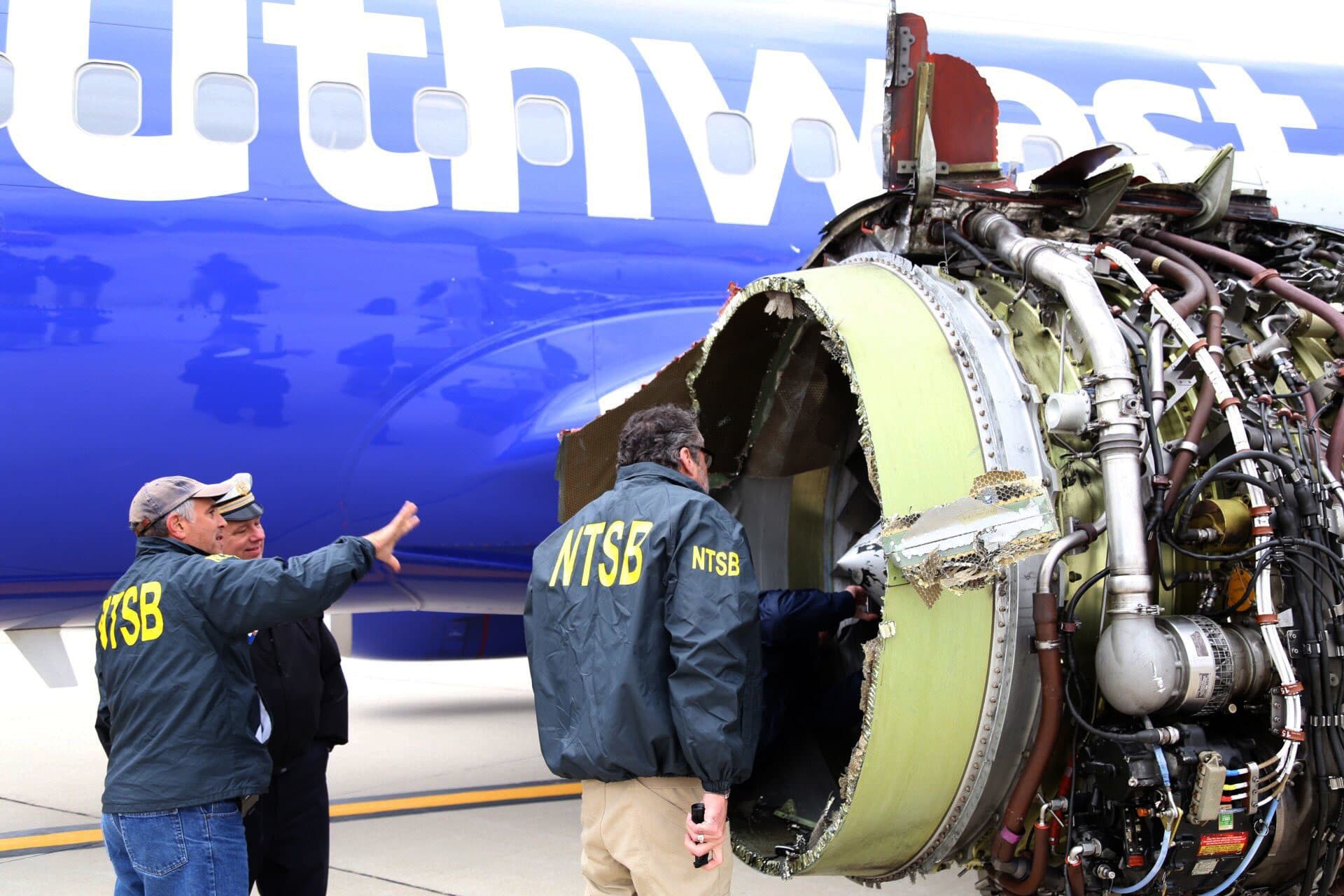Boeing commits to NTSB safety fixes on thousands of 737 NG jets after deadly Southwest engine blast

Boeing on Tuesday said it plans to revamp parts for thousands of 737s after federal safety officials investigating last year's deadly engine blast on Southwest Airlines flight called for a redesign that would better withstand engine failures in flight.
The National Transportation Safety Board's recommendations come after its investigation of Southwest Flight 1380, in April 2018, when a fan blade broke off one of the engines, punctured a three-pane window and sucked a passenger partly out of the plane briefly. The passenger, who was pulled back inside the aircraft by passengers, died, becoming the first accident-related fatality on a U.S. airline in almost a decade.
The National Transportation Safety Board's recommendations are adding to scrutiny of the Boeing's designs amid a worldwide grounding of its Max jetliners after two deadly crashes and issues with a part on some older 737 jetliners.
The NTSB's recommendations refer to the 737 NG, or next-generation plane, of which about 7,000 have been delivered to airlines worldwide, according to Teal Group data.
Boeing said it commended the NTSB for its investigation and said it is "committed to working closely with the FAA, engine manufacturers, and industry stakeholders to implement enhancements that address the NTSB's safety recommendations."
It said "enhancements are being introduced" to inlet and fan cowls to improve "their ability to withstand an engine fan blade out event as well as to increase the overall capability of these structures."
On April 17, 2018, a Southwest Boeing 737-700, which was en route to Dallas Love Field from New York's LaGuardia Airport on April 17, 2018, with 144 passengers and five crew members on board, diverted to Philadelphia after the incident. After the accident, the Federal Aviation Administration ordered airlines to checks for cracks in CFM56 engine fan blades.
Boeing said all 737 NGs are safe to keep operating because "the issue is completely mitigated by the fan blade inspections."
The NTSB recommendations don't relate to Boeing's beleaguered 737 Max, a newer version of the plane that has been grounded since mid-March in the wake of two fatal crashes in a span of five months, but the recommendations are adding to scrutiny of the aerospace giant's planes. Dozens of 737 NGs have been grounded recently after inspectors found cracks in so-called pickle forks, which connect wings to fuselages. In June, the FAA called for checks on dozens of older 737 planes for potentially faulty wing parts.
Southwest, which operates an all-Boeing 737 fleet, said in a statement that safety of its fleet, crews and customers "are of paramount importance."
"We look forward to reviewing the NTSB's recommendations and working with the manufacturers to prevent this type of event from ever happening again," the Dallas-based airline said.
The CFM-56 engines on the Southwest plane involved in the April 2018 accident are some of the most popular in the world and made by CFM International, joint venture of General Electric and France's Safran.
"Our standard practice is to develop and certify engines in close collaboration with our airframe partners, working within the appropriate regulatory framework," CFM told CNBC in a statement. "We will continue to strictly comply with regulatory requirements, including any changes that might be adopted as a result of NTSB's recommendations."
Boeing shares fell sharply after the NTSB's recommendations, released in Washington, D.C., during the agency's hearing on the probable cause of the deadly incident on the flight, but recovered some ground, closing down 0.7% at $367.
Among its seven recommendations NTSB also said airlines retrofit their aircraft with the new coverings, known as a cowling.
"The recommendations we adopted today are a reminder that it is not enough to do our best to prevent a failure," said NTSB Chairman Robert Sumwalt. "We also must actively work to identify ways to minimize the effects of a failure if one occurs."
The agency said the accident occurred because of a "low-cycle" — or low-use — fatigue crack in the fan blade that was not likely detectable during the plane's last routine inspections.
Read More
No comments